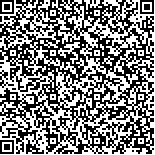| 引用本文: | 冯玉,甄亚钦,田伟,范帅帅,李军山,牛丽颖.基于UPLC指纹图谱和化学计量学相结合的川芎质量研究[J].中国现代应用药学,2019,36(23):2903-2908. |
| FENG Yu,ZHEN Yaqin,TIAN Wei,FAN Shuaishuai,LI Junshan,NIU Liyin.Study on the Quality of Chuanxiong Rhizoma Based on UPLC Fingerprint and Stoichiometry[J].Chin J Mod Appl Pharm(中国现代应用药学),2019,36(23):2903-2908. |
|
| |
|
|
| 本文已被:浏览 2564次 下载 1294次 |

码上扫一扫! |
|
|
| 基于UPLC指纹图谱和化学计量学相结合的川芎质量研究 |
|
冯玉1, 甄亚钦1,2,3, 田伟1,2,3, 范帅帅1, 李军山2,3,4, 牛丽颖1,2,3
|
|
1.河北中医学院, 石家庄 050091;2.河北省中药配方颗粒技术创新中心, 石家庄 050091;3.河北省高校中药配方颗粒应用技术研发中心, 石家庄 050091;4.神威药业集团有限公司, 石家庄 051430
|
|
| 摘要: |
| 目的 建立并比较川芎药材、破壁饮片、标准煎液、配方颗粒的UPLC指纹图谱,分析其相似度并对川芎不同饮片形式进行聚类分析(cluster analysis,CA)及主成分分析(principal component analysis,PCA),为川芎不同的饮片形式提供质量控制依据。方法 采用Waters ACQUITY UPLC BEH C18色谱柱(2.1 mm×100 mm,1.7 μm);以乙腈-0.1%磷酸为流动相,梯度洗脱;流速0.3 mL·min-1;检测波长276 nm;柱温35℃;进样量2 μL。对12批川芎药材及其标准煎液、7批破壁饮片、以及6家厂家的川芎配方颗粒进行检测,采用国家药典委员会中药色谱指纹图谱相似度评价系统软件(2012年版)中位数法计算其相似度,并运用SPSS 22.0统计软件进行化学模式识别分析。结果 川芎各饮片形式相似度均>0.9,川芎药材、破壁饮片、标准煎液、配方颗粒与对照图谱的相似度分别为0.534,0.449,0.979,0.968。CA及PCA分析揭示了川芎不同饮片形式之间的相似性及差异性。结论 以指纹图谱数据为基础,将CA与PCA相结合,可以看出川芎每种饮片形式质量较稳定,并且川芎破壁饮片与药材相似度较高,川芎标准煎液与川芎配方颗粒相似度较高。 |
| 关键词: 川芎 超高效液相色谱法 指纹图谱 主成分分析 聚类分析 |
| DOI:10.13748/j.cnki.issn1007-7693.2019.23.005 |
| 分类号:R284.1;R917.101 |
| 基金项目:河北省自然科学基金项目(H2019423050) |
|
| Study on the Quality of Chuanxiong Rhizoma Based on UPLC Fingerprint and Stoichiometry |
|
FENG Yu1, ZHEN Yaqin1,2,3, TIAN Wei1,2,3, FAN Shuaishuai1, LI Junshan2,3,4, NIU Liyin1,2,3
|
|
1.Hebei University of Chinese Medicine, Shijiazhuang 050091, China;2.TCM Formula Technology Innovation Center of Hebei Province University, Shijiazhuang 050091, China;3.Hebei TCM Formula Granule Engineering&Technology Research Center, Shijiazhuang 050091, China;4.China Shineway Pharmaceutical Group Limited, Shijiazhuang 051430, China
|
| Abstract: |
| OBJECTIVE To establish and compare the UPLC fingerprint of Chuanxiong Rhizoma, broken wall piece, standard decoction and formula granules, analyze its similarity and conduct cluster analysis (CA) and principal component analysis (PCA) for different forms of Chuanxiong Rhizoma, so as to provide quality control basis for different forms of Chuanxiong Rhizoma. METHODS The separation was carried out on a Waters ACQUITY UPLC BEH C18(2.1 mm×100 mm, 1.7 μm) with the mixture of acetonitrile and 0.1% phosphoric acid as the mobile phase in a gradient elution model at a flow rate of 0.3 mL·min-1, the detection wavelength was 276 nm, the column temperature was 35℃, and the sample volume was 2 μL. Twelve batches of Chuanxiong Rhizoma medicinal materials and the standard decoction, 7 batches of broken wall piece, and 6 manufacturers of Chuanxiong Rhizoma formula particles were detected. All of samples were analyzed using the evaluation system of Traditional Chinese Medicine Chromatographic Fingerprint Similarity(2012 Version) and using SPSS 22.0 statistical software for chemical pattern recognition analysis. RESULTS The similarity of different forms of Chuanxiong Rhizoma was >0.9, and the similarity of different forms of Chuanxiong Rhizoma was 0.534, 0.449, 0.979 and 0.968, respectively. Cluster analysis and principal component analysis revealed the similarities and differences between the different forms of Chuanxiong Rhizoma. CONCLUSION Based on the fingerprint data, combining the CA and PCA, it can be seen that the quality of different forms of Chuanxiong Rhizoma is stable. In addition, the similarity between broken wall piece and the medicinal materials is higher, and the similarity between standard decoction and formula granules is higher. |
| Key words: Chuanxiong Rhizoma UPLC fingerprint principal component analysis cluster analysis |
|
|
|
|
